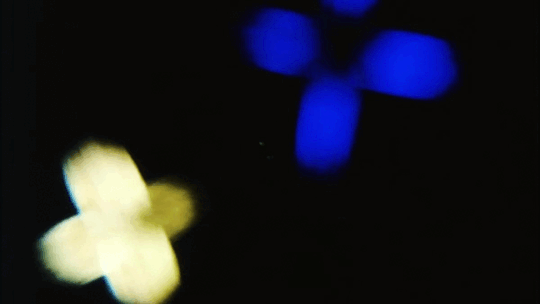#Harmonics
Explore tagged Tumblr posts
Text
The top image is a graph of the first nine harmonics of a harmonic series. The bottom image is an x-ray of the inner structure of a conch shell.

#harmonics#sacred geometry#conch shell#intelligent design#science#sound#audio#music#music theory#harmony
9 notes
·
View notes
Text
@ellaspore, I blame you entirely for this. How dare you give me the courage to express my thoughts openly. Consider this me shouting from the rooftops.
So, my music-obsessed brain has been sitting on a particular KinnPorsche moment for over a year now. So let me get crazy and belatedly add my own two cents to all the meta we already have for this show.
In episode 5, we had Kinn and Porsche trying to cope with their confusion over their first time in The Bathroom™ and their feelings for each other by making out with other people, Porsche at Yok’s bar and Kinn in his room. And the music (Volunteer by David Celeste, a composer I like about as much as the staff of many Thai BLs seem to) does something so wonderful in that moment to illustrate their feelings—especially Porsche’s—that I’m still gushing about it a year later.
youtube
The first interesting thing is that we start the scene in complete darkness, musically speaking. All we have is this simple and super vague piano melody. The first time I watched this scene I remember how unsettled the music made me feel because of how vague it is; I didn’t know how to understand or interpret it and the mood of the scene around it. And this is because there is something fundamental missing.
All the piano plays is fifths—first g and d in the first two measures, then d and a in the following. (I am aware that the last three bars of the transcription below make it a little more complicated because of that f# in the left hand, which means it’s not just fifths, but since this particular harmonic holds no value for what I’m about to write, I’ll just ignore it.) And it is important that they are fifths, because fifths are pretty much the backbone of any harmonic. They tell us some basics about the key we’re in and about the chords we’re using, which is important because these two things are what creates the mood of the entire piece.

The first five measures of the piece, which correspond to roughly 0:00 to 0:13 of the video linked above and about 21:11 to 21:23 of episode 5.
But we’re missing one fundamental factor to get clarification about the exact key and chords here: the third. In case you don’t know, every basic chord is made up of three notes: the base note, the third and the fifth. And the third is arguably the most important note of the chord—at least in our case—because it differentiates between a major and a minor chord.
Basically (and this is simplified quite a bit), every chord exists in two modes—major and minor. The only difference between them, musically speaking, is the third: in a major chord, the third is a major third, meaning it is four semitones up from the base note, whereas the minor chord has a minor third, which is three semitones up from the base note.

A little illustration of the construction of a basic chord (here C major) and the intervals between its notes.
What that means in practice is that the chords sound radically different. In general, major chords sound more upbeat, happy and positive, while minor chords have more of a somber, sad vibe to them. Feel free to listen to the demonstration below.
So, now that we have the basics of harmony out of the way—how in the world does this relate to the scene and KinnPorsche? Well, now that you understand why thirds are so important, you’ll also understand why the lack of a third is equally important. As I mentioned before, we start the scene and the piece with only fifths. Because we’re missing the third especially in the first chord (spanning the first two bars), we can’t determine the mode of the chord or the key of the entire piece, and so we’re ripped of any sort of understanding about the mood of the music and the scene. This creates a really unsettled and tense feeling and makes you think that’s what the characters are feeling. As we watch Porsche make out with that girl, the music tells us how uncertain he himself is of what he’s doing. He doesn’t know if he’s making the right choices. He’s walking a fine line of mental instability, yay.
As powerful as this lack of the third is, what’s even more powerful is when and how it finally does appear. Because it shows up in the exact instant that Porsche suddenly pauses and his mind flashes back to Kinn (~21:27 of the episode). And we get it in a very subtle, but elegant way: the strings, which were quietly reinforcing the fifths in the piano before, now add that third note to complete the first chord of the theme, the only chord we really need because it is the tonic (which makes it the most important one in determining the key).
Based on only the fifths—g and d—the chord (and the key, which is identical to the tonic) could have been a G major or g minor chord. In the case of the first one, the third would have been a b, and in the second one a b flat (see the above video demonstration of a G major and minor chord for reference). And what note do the strings add? A b flat, which puts both the chord and the key into g minor, the sadder, quieter mode of the two. It finally gives us the clarification we needed: what Porsche is doing isn’t working, he is sad about how things are with Kinn, he misses Kinn and his touch. Before, he wasn’t sure about what he was doing, now he knows it’s not what he wants or needs. His attempt at forgetting him through this woman has failed.

Measures 9-15, which correspond to roughly 0:15 to 0:26 of the video and 21:25 to 21:37 of the episode.
I also really appreciate how the strings were the ones to bring this resolution, not only because they have a very soft tone and are therefore already typically connected to sad music, but also because they make it possible to introduce the new note very carefully and quietly. For at least the first half of the first measure in the above picture, the note can’t even be heard, and then it is introduced through a crescendo, slowly appearing like it is dawning on Porsche that he can’t forget Kinn.
From this point on—as Porsche tries to distract himself from this realization by kissing the woman and we get to see Kinn do the same—, more strings come in and the piano develops the theme we have heard twice now. The piece also gets a bit more complex harmonically, but all of these changes just serve to highlight the minor key we are in and the depressed, lonely, even desperate mood of both Kinn and Porsche. It mixes well with the almost feverish, desperate way especially Kinn behaves in that moment.
So, I want to thank whoever was in charge of the music in this show because they made some excellent choices (and some interesting ones—looking at you, weird MIDI-sounding version of Vivaldi’s Summer that for some reason comes up again and again), but this piece in particular stood out to me because of how perfectly it was edited into the scene. This doesn’t happen very often in (Thai) BLs since very few of them have scores specifically written for them, so most have to make do with pre-existing pieces that can often not be incorporated as elegantly and interestingly as an original soundtrack.
#this got much longer than I expected#sorry for all the music theory#I just really get excited about this stuff#kinnporsche#music theory#harmonics#kinnporsche meta#also sorry if there were any language mistakes#English is my second language#and even though I feel very comfortable speaking it#I don’t spend a lot of time talking about music theory in English
31 notes
·
View notes
Text
If the lines go on harmoniously from one measurement to another, then it is like the wave lengths of a string making the fifth, the third, or the octave. So you have these harmonics in architecture as you do in music, only you have to transpose.
Hassan Fathy, Building for the 800 Million, interviewed by John Feeney, 28-31 July/August 1999, Saudi Aramco World
#quote#architecture#music#harmony#architectural theroy#Hassan Fathy#Fathy#architect of the poor#harmonics#Egypt
18 notes
·
View notes
Text
Joe Goddard — Harmonics (Domino)

Photo by Louise Mason
youtube
Hot Chip’s Joe Goddard enlarges a euphoric, body-moving electronic aesthetic on this third solo album by inviting in collaborators, and though results vary, the best of these partnerships are extraordinary.
Some of these meetups are not surprising, as when Alexis Taylor and Al Doyle turn up for “Mountains.” Here a plurality of Hot Chip join in a blippy, boppy, spirit quest that asks existential questions amid rave-y bursts of synth and drum machine. Wild Beasts’ Hayden Thorpe, too, seems like a natural choice in “Summons,” executing wild operatic arcs of melody atop grumbling synth bass and pounding keyboards. But a couple of tracks featuring Goddard discovery Findia fall flat; they’re not terrible but feel a bit like by-the-numbers dance pop.
In fact, the further Goddard gets away from what you might expect, the better these cuts work. It’s the oddball entries that catch your ear. Tom McFarland, of the UK dance-pop ensemble Jungle, flutters soulfully over eerie, trebly keyboard auras in “Ghosts,” stretching words into fluid glissandos. McFarland, perhaps reflecting the title, is a spare, spectral presence, but the chorus kicks in with a gospel weight and certainty, a triumph over frailty and doubt. The jazz saxophone player and pop collage-ist Alexander DePlume is another unexpected choice, blowing in over the glitchy flicker of “Revery” with slow, vibrato-laced tones, a florid, faintly old fashioned sound in an electronic forest. But the best of all is “Miles Away,” an unearthly mesh of the Guinean singer Falle Nioke’s resonating tones and the chiming of mbira. If there were a whole album of just this, I’d be all in, 100%.
Goddard sometimes tinged his old band’s tunes with melancholy taking the vocals, for instance, on the moody, soulful “Hungry Children,” but Harmonics reaches for positive affirmation. “Progress,” aided by Ibibio Sound System’s Eno Williams, percolates with good feelings. Its heavily effected vocals soaring over pulsing, tonally intricate Konono 1-style percussion and swinging brass. It lifts off effortlessly and takes you with it.
In the end, it feels wrong to call this album a solo record, since it is defined and elevated by the people Goddard works with. He’s been adventurous in seeking out partners, choosing some familiar ones and some that no one would have predicted, and the risks, especially, have paid off.
Jennifer Kelly
#joe goddard#harmonics#domino#jennifer kelly#albumreview#dusted magazine#hot chip#electronics#dance#falle nioke#hayden thorpe#alexis taylor#ibibio sound machine
3 notes
·
View notes
Text


Diana Reichenbach, {2009} Harmonics
#film#gif#diana reichenbach#harmonics#2009#female filmmakers#experimental film#short film#animation#light painting#colour#abstract#usa#2000s
10 notes
·
View notes
Text
One More Take
youtube
3 notes
·
View notes
Text

#gif#diagram#physics#particle physics#quantum physics#animation#quantum#oscillator#harmonics#mechanics#credit:Sbyrnes321#schrodinger#schrodinger equation
3 notes
·
View notes
Text
I actually now have the strength to fiddle with my harmonics notation after I stared at Crowley for an extended period of time. I live for them they give me life.
2 notes
·
View notes
Audio
Listen/purchase: Guitar Harmonics by Robert Rich


#bandcamp#Bandcamp Friday#Guitar#Harmonics#Electronic#Ambient#Music#Art#Ram Dass#Be Here Now#Meditation
2 notes
·
View notes
Text
#NowPlaying: "Waterphone Mic Test" by bartonmusic
1 note
·
View note
Text

Pythagoras used intervals of harmonic ratios as a type of medicine for "dis-eases" of the body, the emotions, & the Soul. “He aligned Souls to their divine nature” and through music he performed what he called, “Soul Adjustments”. Pythagoras was able to discern the harmony and consonance of heavenly bodies: the “Music of the Spheres”...
"There is geometry in the humming of the strings, there is music in the spacing of the spheres." - Pythagoras
2 notes
·
View notes
Photo

Holding fast in the face of despair. #initenere script by @linusschrab controlling #fmsynth on #op1field, and #harmonics on electric guitar through #generationlossmkii, looped on #chaseblissblooper and #empresszoia, plus slowed down loop on #hologrammicrocosm. Part 2: incoming distortion on #iridium. Pt 3: full wet on microcosm #microloop. Enjoy with headphones. More music in bio. . . . #ambient #ambientmusic #postrock #dronemusic #ambientdrone #tapeloops #soundscape #fieldrecording #pedalboard #pushandtweak #electronicmusic #welcometospacelounge #hologrammricrocosm #ambientcuration #bandcamp https://www.instagram.com/p/CqdATd7tMc7/?igshid=NGJjMDIxMWI=
#initenere#fmsynth#op1field#harmonics#generationlossmkii#chaseblissblooper#empresszoia#hologrammicrocosm#iridium#microloop#ambient#ambientmusic#postrock#dronemusic#ambientdrone#tapeloops#soundscape#fieldrecording#pedalboard#pushandtweak#electronicmusic#welcometospacelounge#hologrammricrocosm#ambientcuration#bandcamp
3 notes
·
View notes
Text
Grant Cameron (Whitehouse UFO)
Jimmy Blanchette: First Contact - Breaking the Veil (February 2023 Update)
youtube
Thursday, February 23, 2023
3 notes
·
View notes
Text
youtube
Intro Part 3: What's A Filter?
#synth#synthesizer#tutorials#filter#synthesis#monopoly#korg#lowpassfilter#highpassfilter#lpf#hpf#notch#bendpassfilter#shape#color#harmonics#Youtube#modulation#resonance#cutoff#moog#minimoog#modeld#roland#juno6#prophet6#davesmith#ms20#dynamics#reverbchannel
0 notes